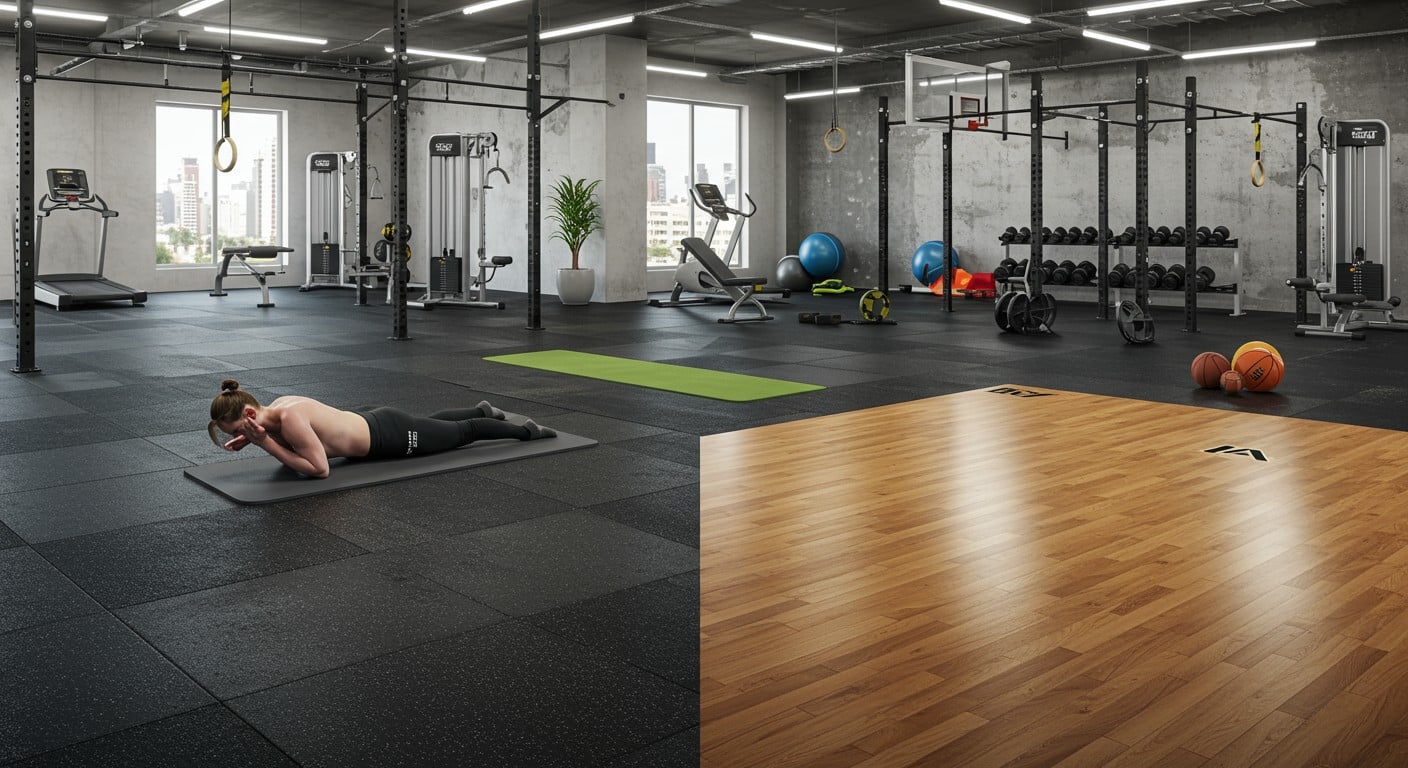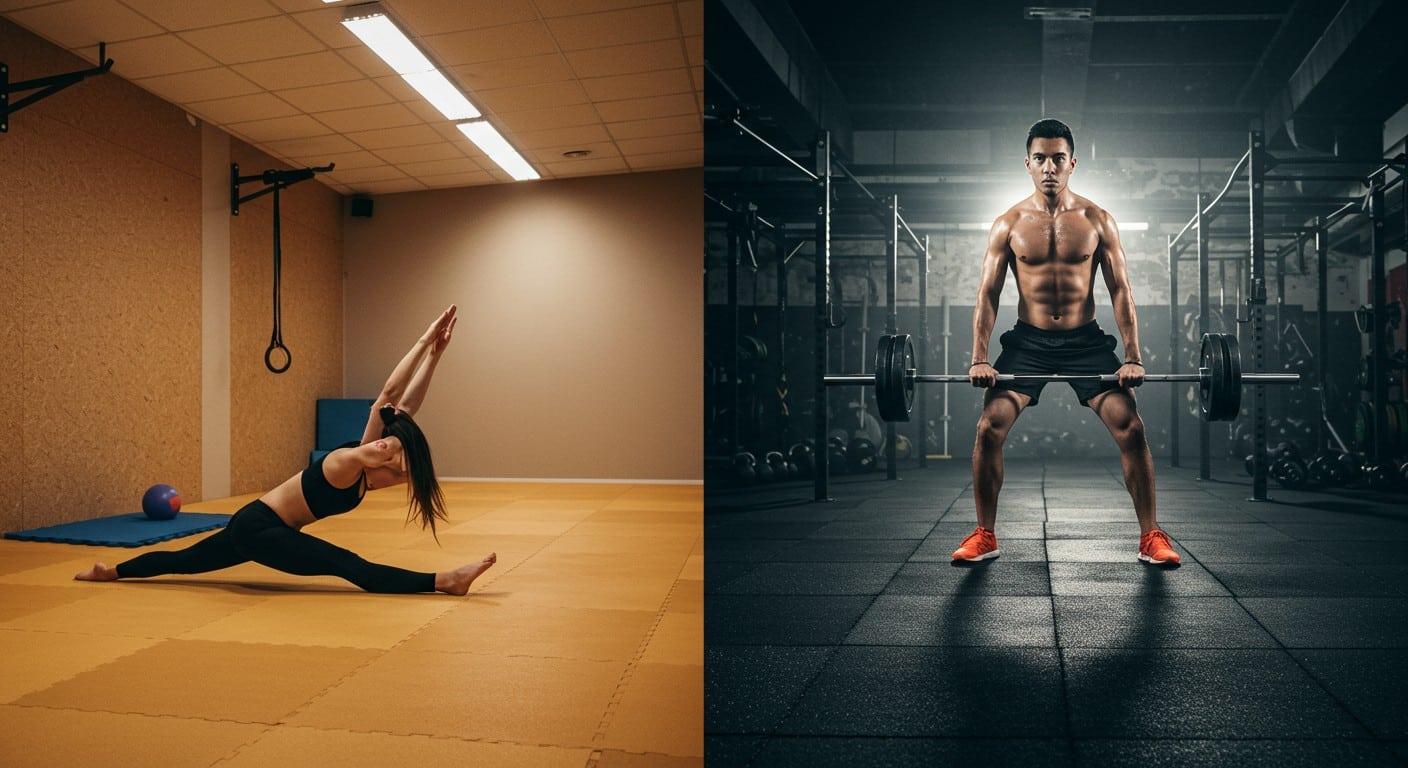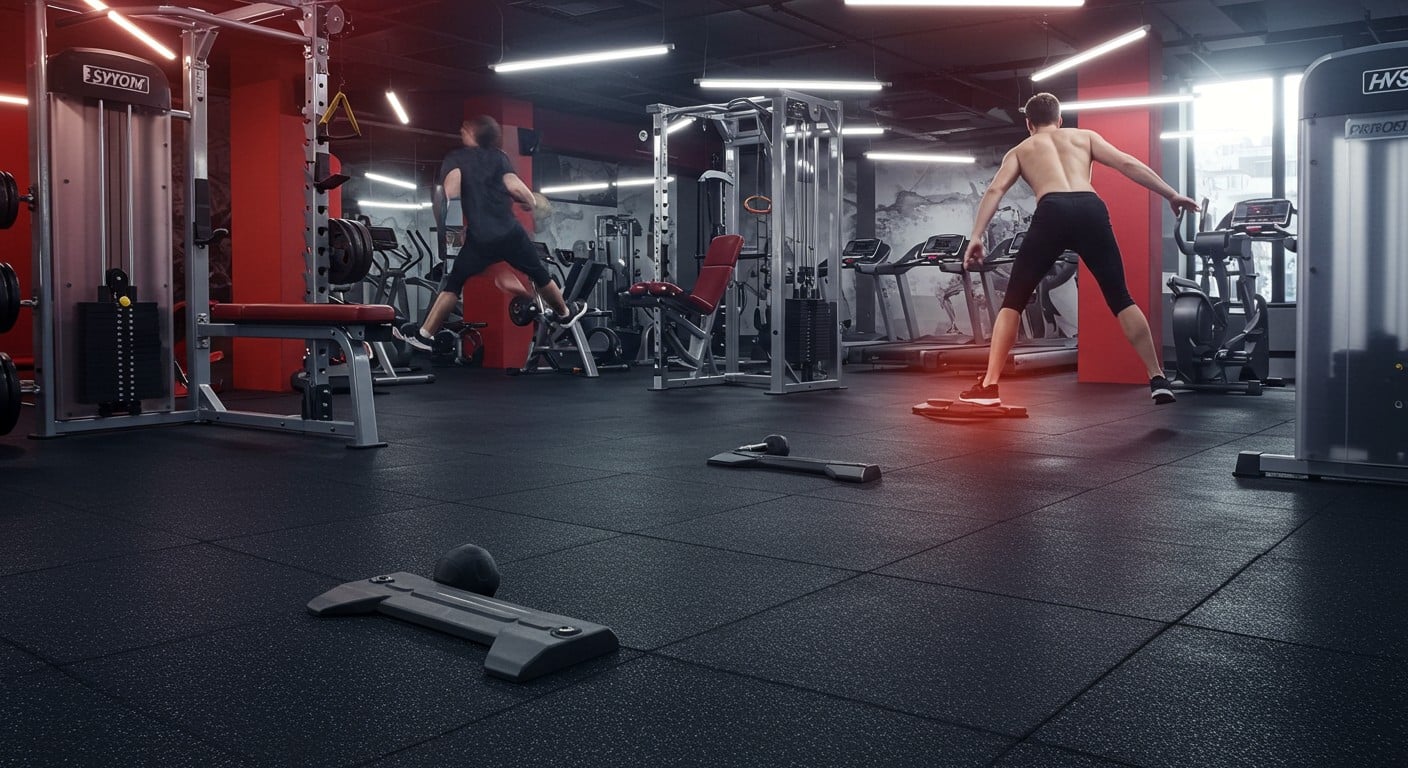Choosing the right gym flooring1 can be a real problem. It’s like picking the right shoes – you need the right fit for what you’re doing.
The best type of flooring for a gym really depends on your needs. Rubber2 is a popular choice because it’s durable and absorbs shock, perfect for heavy lifting and high-impact workouts. But, other options like foam, wood, and specialized systems3 exist for different activities and budgets.
 rubber gym flooring
rubber gym flooring
There’s a lot to consider. But we can break it down, so stick with me, and we’ll go through all your options.
What is the best type of flooring for a gym4?
Picking the right flooring feels like a workout in itself. It’s tough to choose, just like that last set of reps.
The "best" flooring depends. Think about it like choosing between a protein shake and a solid meal – both are good, but one might be better depending on your goal. Rubber is great for most gyms because it’s tough and can handle heavy weights. But, other options might be better for you.
 best type of flooring for a gym
best type of flooring for a gym
| Flooring Type | Best For | Pros | Cons |
|---|---|---|---|
| Rubber | Weightlifting, high-impact activities | Durable, shock-absorbing, versatile | Can be expensive, different types have different feels |
| Wood5 | Olympic lifting, specific movements | Stable, "crisp" feel, allows for foot slide | Can be slippery, not ideal for all activities |
| Foam | Cardio, stretching, bodyweight exercises | Comfortable, affordable, easy to install | Less durable, not suitable for heavy weights |
| Specialized | Vibration/noise reduction | Comparable to concrete in mitigating issues | Can be complex and expensive, may require professional installation |
Think about what you do in your gym. Heavy lifting? Rubber is your friend. Lots of jumping jacks? Foam might be better. We have to consider your main use. If you’re doing Olympic lifts where you need your feet to slide, a smooth, hard surface like wood can be the best. It is all a balancing act, find your balance.
What is the disadvantage of rubber flooring?
Rubber flooring isn’t perfect, just like my form on deadlifts sometimes. It can have downsides, like smelling weird at first.
The biggest disadvantage of rubber flooring can be the feel underfoot. Different types of rubber offer varying levels of "give." This can actually affect how well you lift, especially for movements where foot stability is key. And, some rubber can have a strong odor6, especially at first.
 disadvantage of rubber flooring
disadvantage of rubber flooring
There are a few other things to think about too. Here’s a simple breakdown:
Cost
Good quality rubber flooring can be more expensive than other options, like foam. It’s like buying good quality lifting shoes – it’s an investment.
Installation
While some rubber flooring options are easy to install (like interlocking tiles), others might need professional help. This adds to the overall cost.
Smell
Some rubber flooring, especially when new, can have a strong, distinct odor. This usually goes away over time, but it can be a problem for some people. Think about if your gym is inside your house. This could be a problem.
Is foam or rubber better for gym floors?
Choosing between foam and rubber is like picking between a treadmill and free weights. Both are useful, but for different things.
Foam is softer and more comfortable for things like stretching and bodyweight exercises. Rubber is tougher and better for activities involving heavy weights. So, it depends on what you’ll mostly be doing. It’s a simple choice, just know the differences.
 foam vs rubber gym floors
foam vs rubber gym floors
Here’s a quick way to think about it:
Foam
- Good for: Cardio, stretching, yoga, bodyweight exercises.
- Think of it like: A yoga mat, but bigger.
- Not so good for: Heavy weightlifting, dropping weights.
Rubber
- Good for: Weightlifting, CrossFit, high-impact activities.
- Think of it like: The floor in a commercial gym.
- Not so good for: Activities where you want a lot of cushioning.
If you are building a weight room, rubber is the simple answer. If you are just stretching or need an easy place to set up and workout, foam is a fast pick.
Why do gyms use rubber flooring7?
Gyms use rubber flooring because it’s tough. It’s like that reliable friend who’s always there for you, even when things get heavy.
Rubber flooring can handle the impact of dropped weights and heavy equipment. It also provides good shock absorption8, protecting both the floor underneath and the joints of the people working out. It is the most simple and effective tool.
 Why do gyms use rubber flooring
Why do gyms use rubber flooring
Let’s break down why rubber is the go-to choice:
Durability
It can withstand heavy use and abuse, like dropped weights and constant foot traffic. It’s built to last.
Shock Absorption
It protects the subfloor from damage and reduces the impact on your joints. This is important for preventing injuries. It protects you and the building.
Versatility
It comes in various thicknesses and formats (rolls, tiles, mats), making it suitable for different areas and activities.
Safety
It provides good traction, reducing the risk of slips and falls. This also helps when lifting.
Conclusion
Choosing gym flooring9 isn’t easy, but it’s important. Rubber is often the best all-around choice, but think about your specific needs and budget to make the best decision for your gym.
-
Explore this link to discover various gym flooring options that suit different activities and budgets, ensuring you make an informed choice. ↩
-
Learn why rubber flooring is favored in gyms for its durability and shock absorption, making it ideal for heavy lifting and high-impact workouts. ↩
-
Find out the advantages of foam, wood, and specialized flooring systems to see which best fits your gym’s needs and activities. ↩
-
Explore this link to discover expert insights and detailed comparisons on gym flooring options to make an informed choice. ↩
-
Understanding the pros and cons of wood flooring can help you decide if it’s suitable for your gym activities. ↩
-
Understanding the causes of strong odors in rubber flooring can help you choose better options and mitigate issues. ↩
-
Explore the benefits of rubber flooring in gyms, including durability and shock absorption, to make an informed choice for your workout space. ↩
-
Understanding shock absorption can help you choose flooring that protects your joints and enhances your workout experience. ↩
-
Discover various gym flooring options to find the best fit for your workout needs and budget, ensuring safety and comfort. ↩




One Response